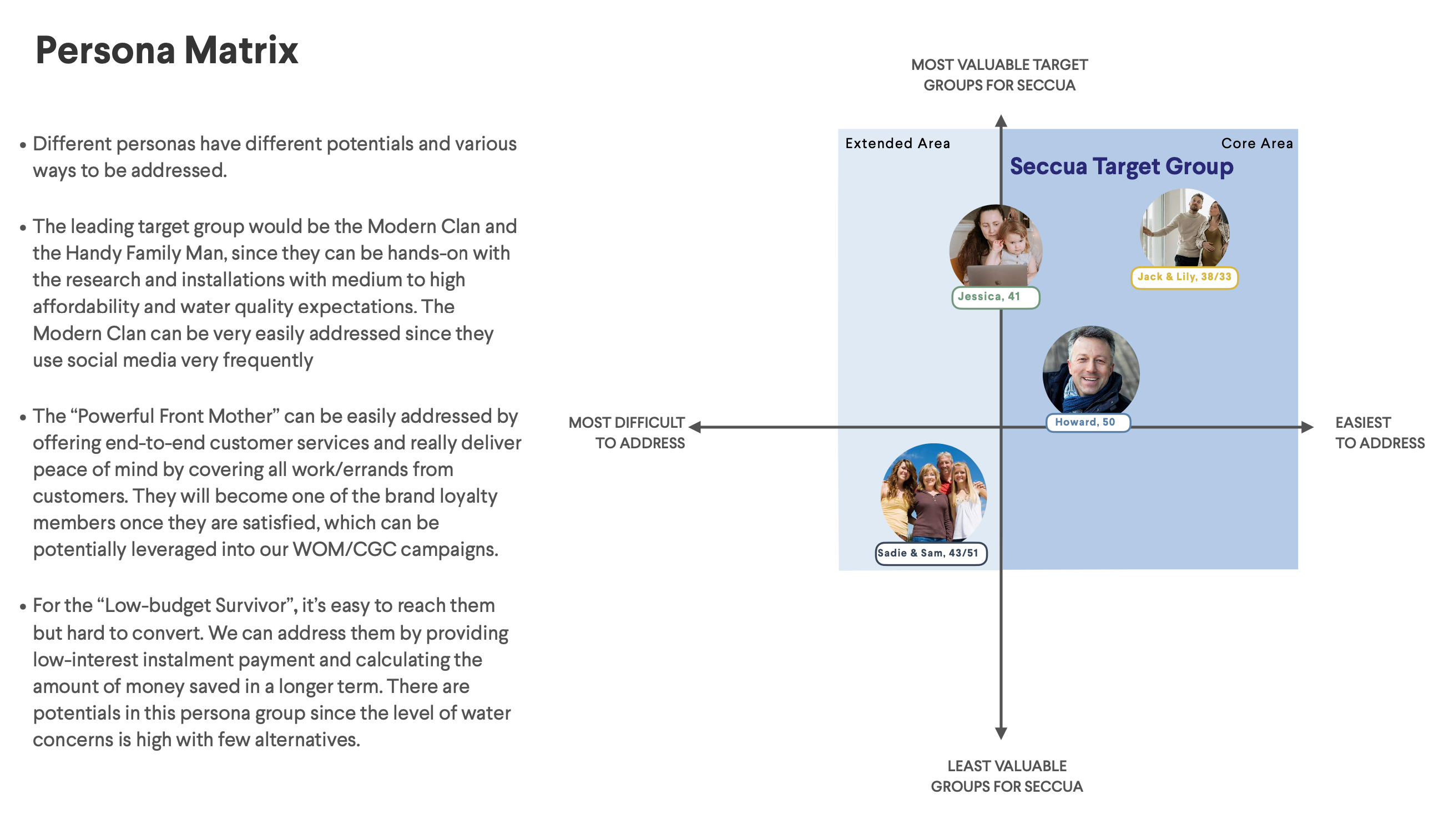¶ Personas
¶ What it is
A Persona represents a typical person from a relevant type of customer. A Persona profile captures the demographic, personality, behaviour, challenges, and needs of a specific customer group in the form of one fictional character.
¶ Why it is useful
Creating personas helps understand one's customers with their needs, behaviour, and expectations. In addition, Personas enable your team to create a picture of whom they are designing for. This makes the design process much easier and facilitates a shared understanding.
¶ When to use
A Persona can be employed at different points of your process: 1) as a hypothesis - when you don't have time to conduct profound research but want to start with the task at hand; 2) as synthesis - when you have done your primary research and can look at the categories of customers based on their behaviour profiles and 3) as a customer segment - when you have precise findings and have employed quantitative research methods (e.g., Surveys) or/and extensive secondary research.
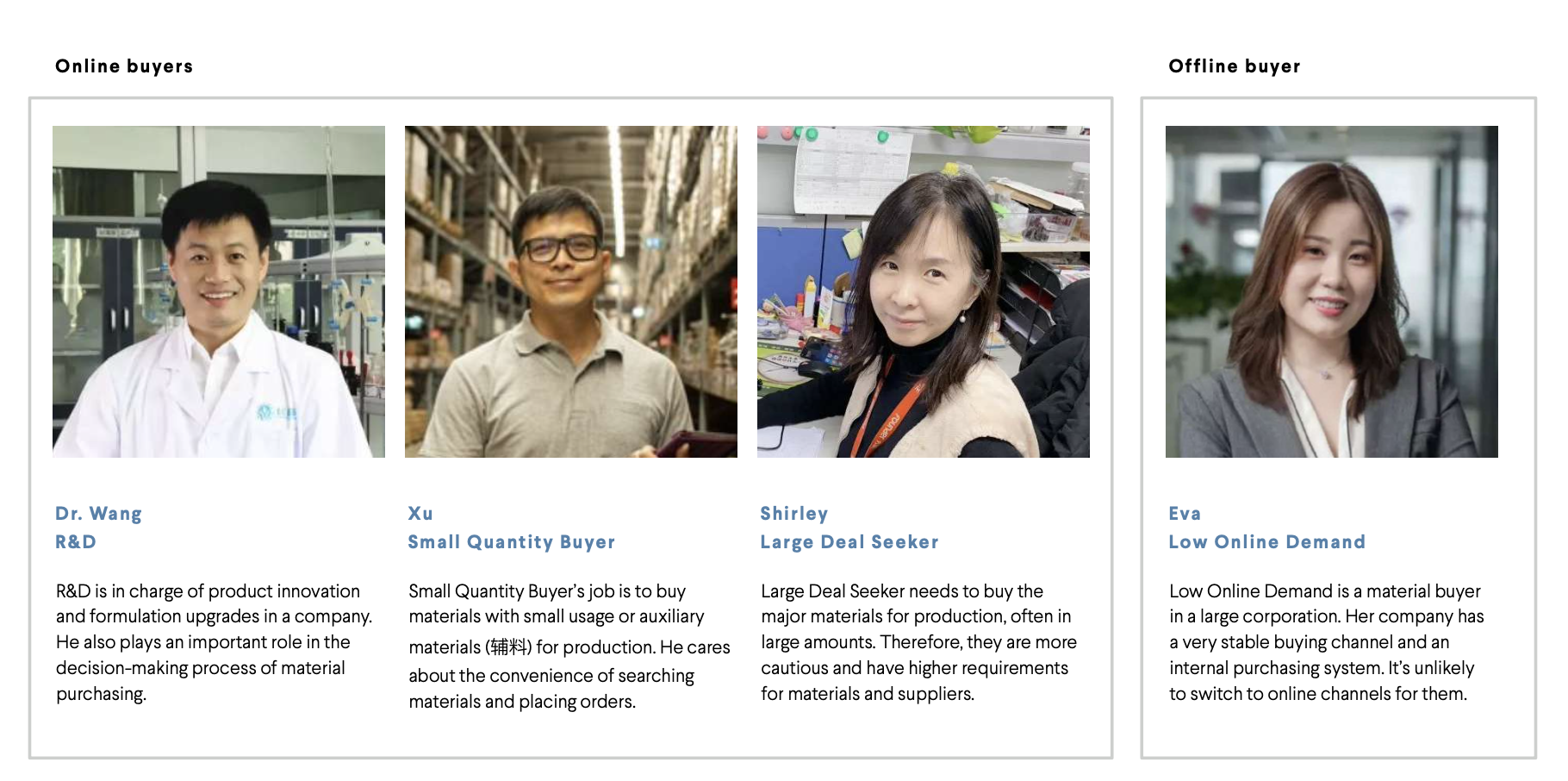
¶ How is it done
The Personas help you understand for whom you will design the solution. This is important as the needs of customers can vary substantially. Just imagine you need to organise a vacation. One might have very different expectations of it. Some people want an adventurous backpacking experience, while others seek a relaxing family experience. You would tailor very different solutions to these customer groups.
Step-by-step developing Personas
- Ask three basic questions: Why are they using/not using your product? What are their main objectives in applying this solution? What is their primary concern/pain point?
- For this, you must go back to your Observation Board and find the post-its that answer the three questions above. Please copy and paste them to a new board and cluster them. Do you see some similarities or differences between who your customers are, what they try to achieve, or what their pain points are?
- Afterwards, you can detail each group by defining key attributes (4~5 metrics) that are most relevant/close to describing the characteristics of our interviewed targeted groups (e.g., see the example here, five metrics are defined to describe and compare between different personas )
- Follow the structured metrics, go back to the data board and look for similarities and differences in the descriptions of each of these metrics. Cluster your notes on any similarities or distinguishable differences (e.g., 5/20 people have similarly high expectations of the water quality)
- Group them up; similar motivations/values are more important than precisely the same behaviours (two people can never be 100% the same)
- Find disagreements in the team (this step is to avoid big errors in the direction). Then, if all team agrees, finalise all details for each persona.
When searching for similarities or differences, you may have some overlap between your customers. Don’t get frustrated. That’s absolutely normal.
Remember that Personas represent only one customer you have talked to. Instead, they represent “typical” customers - they combine characteristics of several customers you have spoken to.
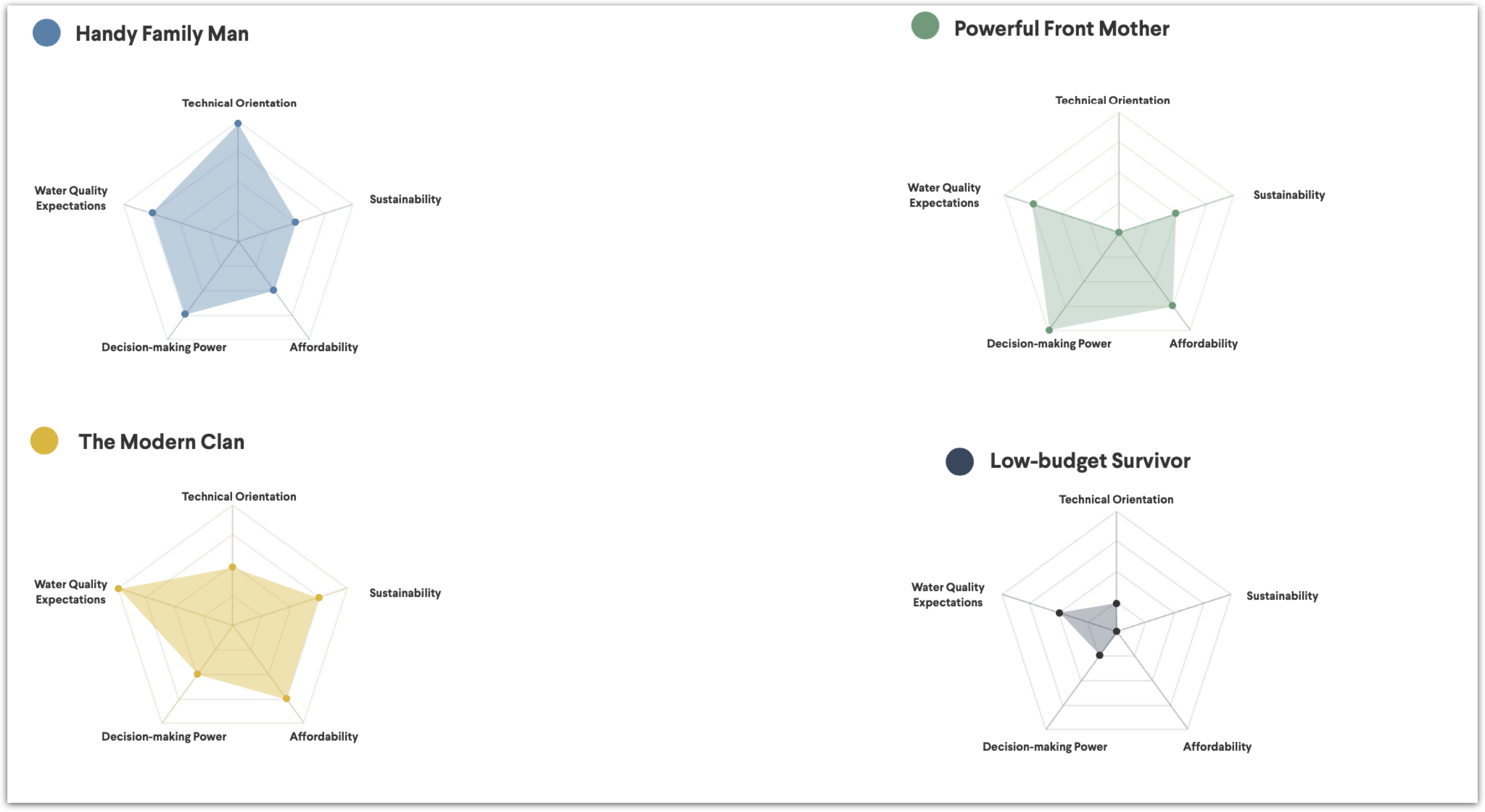
¶ GenAI Tool Use Case
¶ Optimizing the User Persona Creation
QoQo's user role creation feature is designed to assist users in quickly and easily generating specific user roles. Through simple steps, users can select "Personas" from the menu, input relevant details, and click the "Generate" button to complete the process. This functionality aids designers in gaining a more effective understanding of the target audience, enhancing the accuracy of product design and overall user experience.
Key Steps Tutorial:
- Open QoQo from the Figma plugin
- Select “Persona" from the menu
- Enter detailed information
- Click the "Generate" button to complete
- Successfully generated
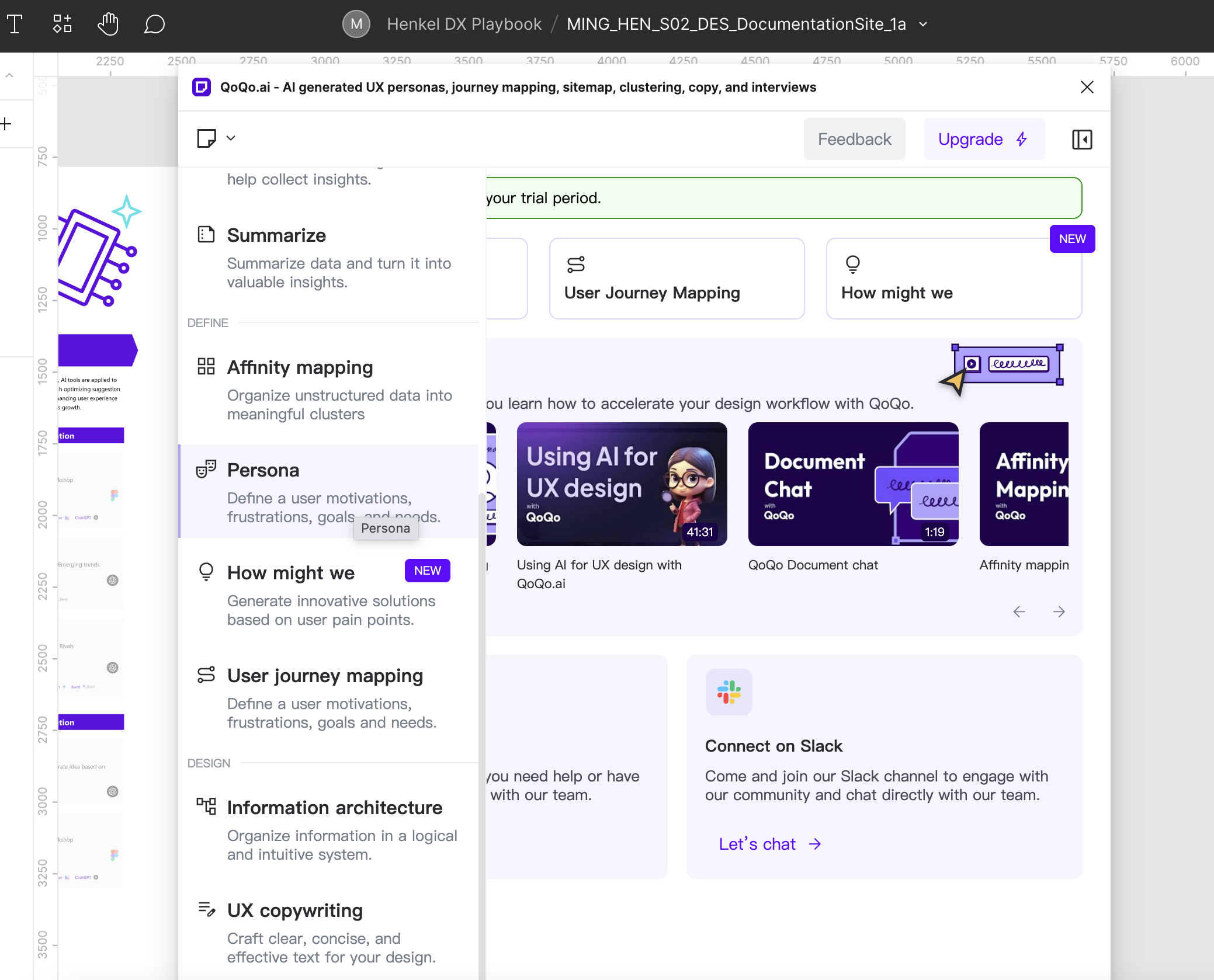
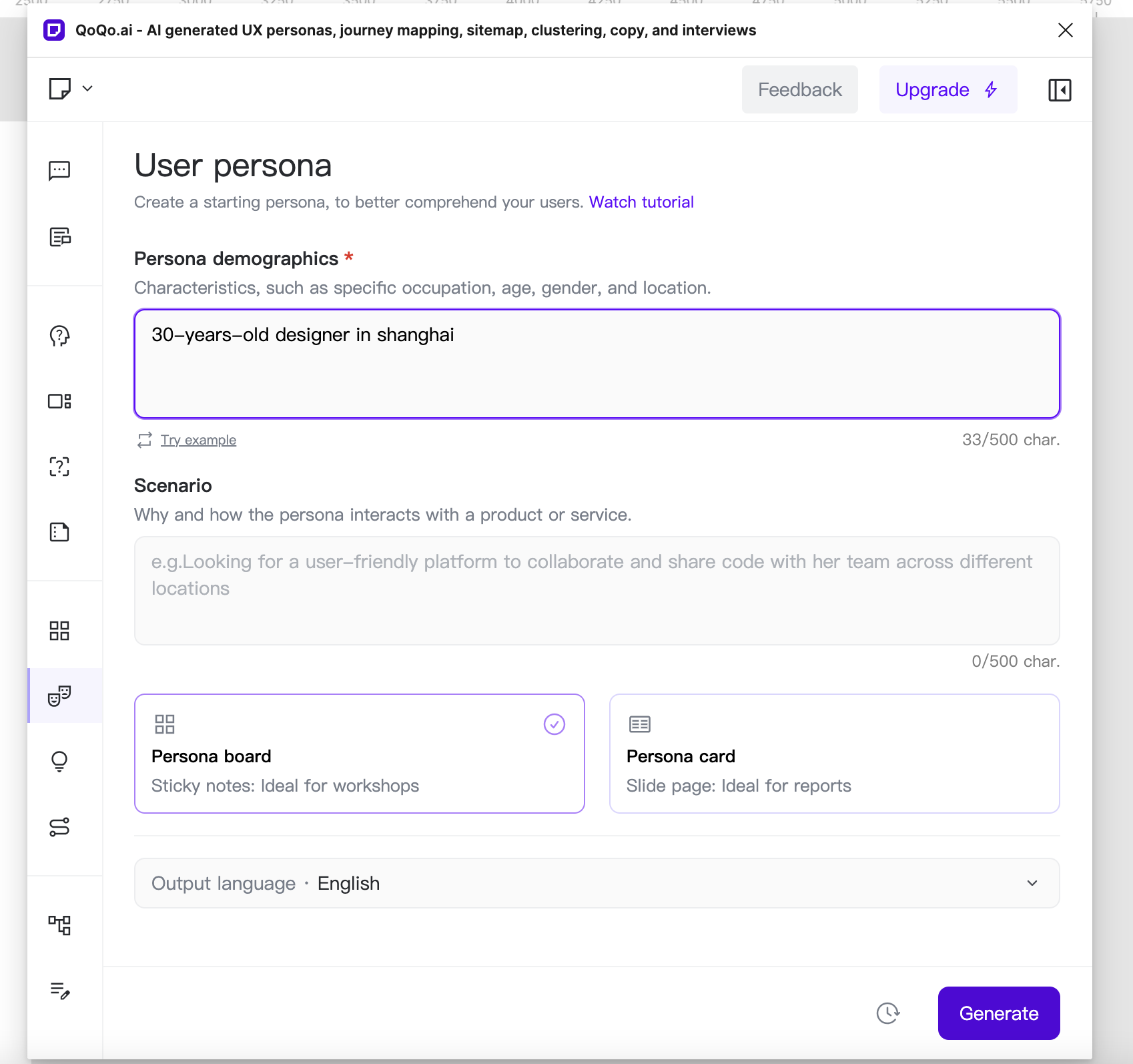
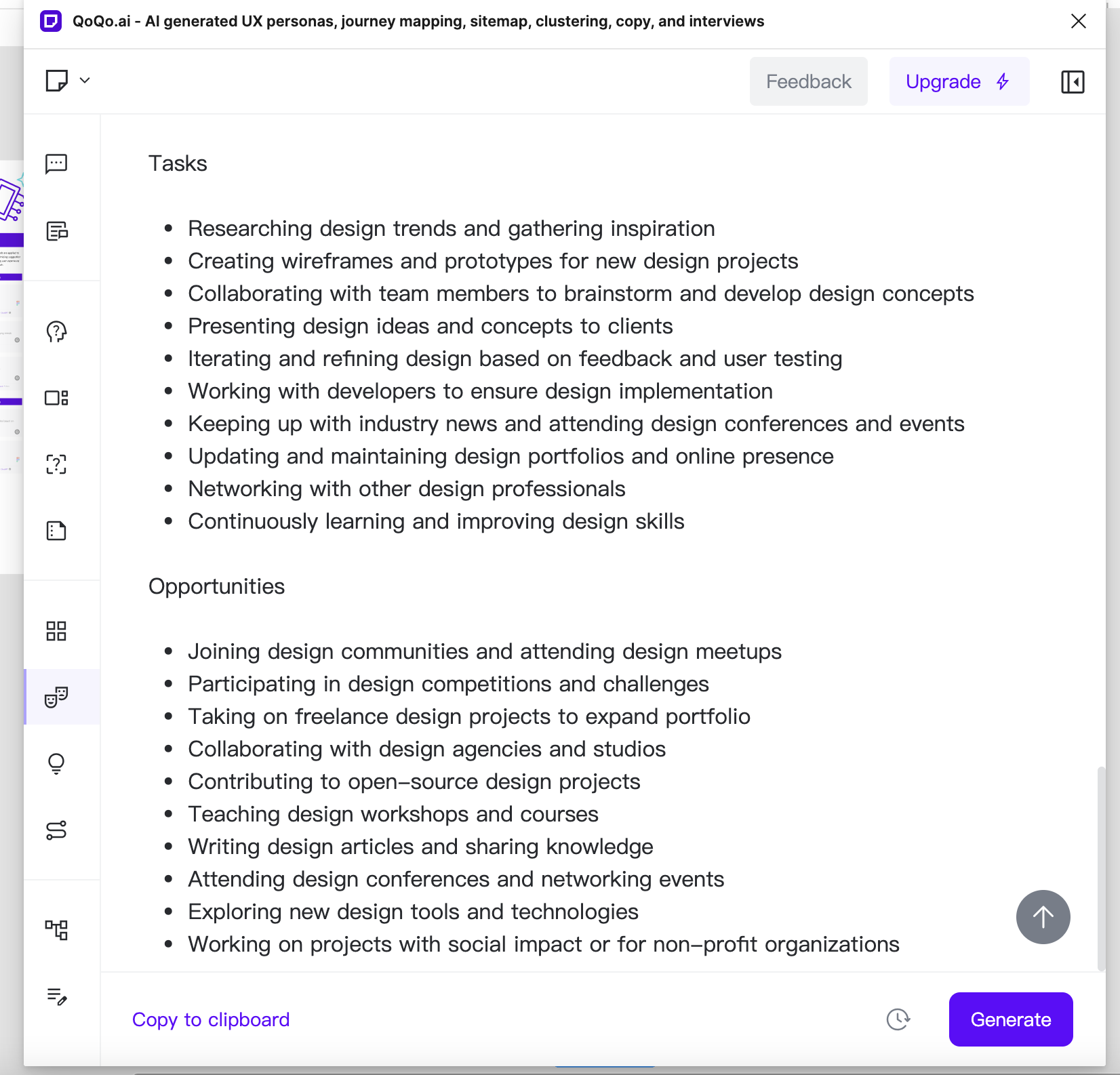
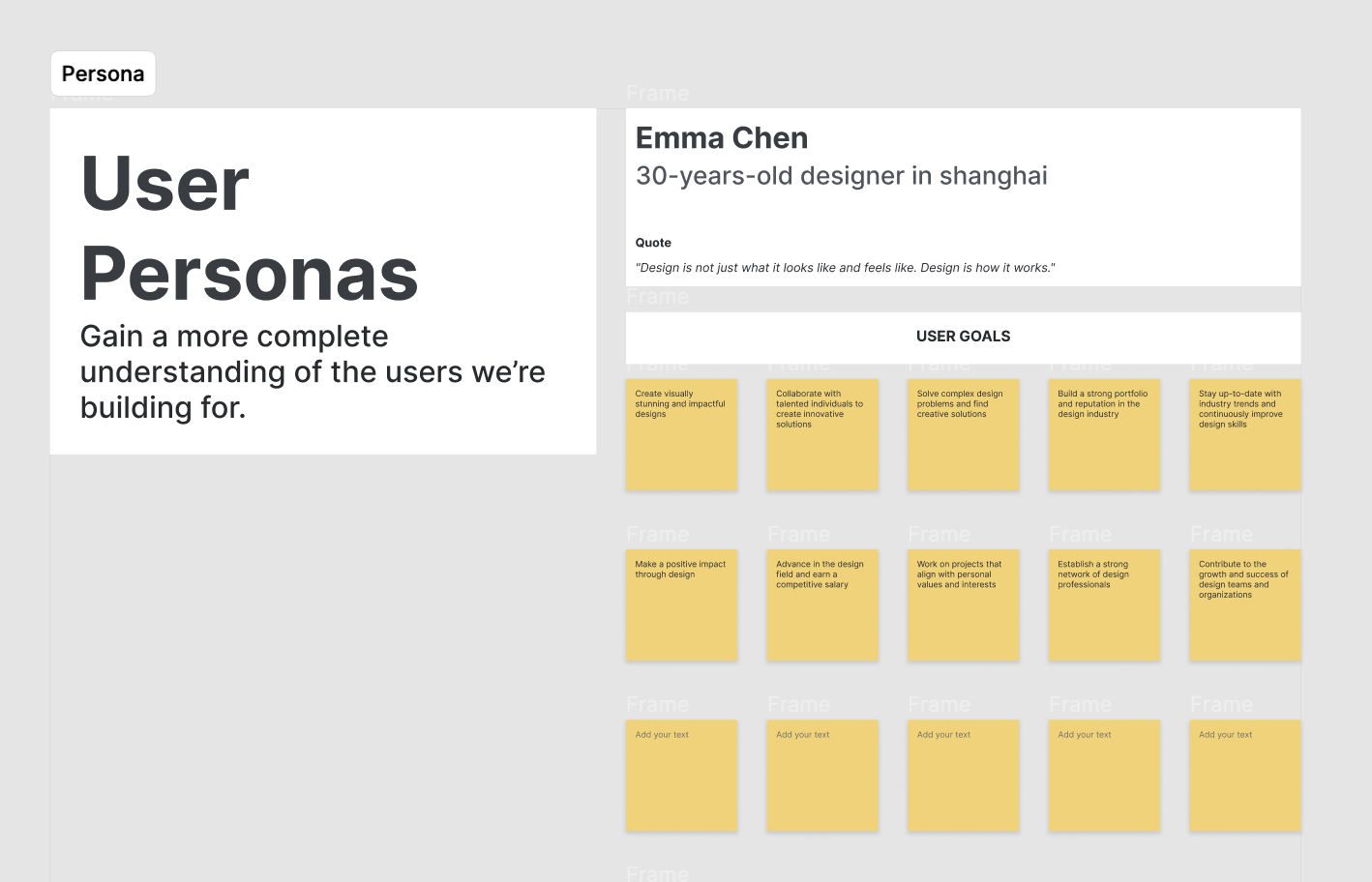
Read More:
How to create the perfect user persona using QoQo as your AI user research companion
¶ Persona Profiles
After categorising differences and similarities on different topics, such as needs and pains, attributes, and purchasing considerations, you can finalise the clustered findings for each persona profile. This would be a holistic description of this group of customers, with detailed information, marketing, and communications will also be able to address this persona accordingly.
What needs to be included in the profile depends on the purpose of your project; for example, for sales & marketing, triggers for purchase and considerations should be covered to provide clear guidance for messaging. However, we list out the basic and advanced topics you might need for your reference:
Basic:
- Objectives or Needs
- Major Pain Points or Concerns
- Demographics (age, gender, jobs, income, etc.)
Advanced:
- Lifestyle
- Hobby & Interests
- Purchase Triggers & Drivers
- Decision-making Power
- Frequent Used Channels
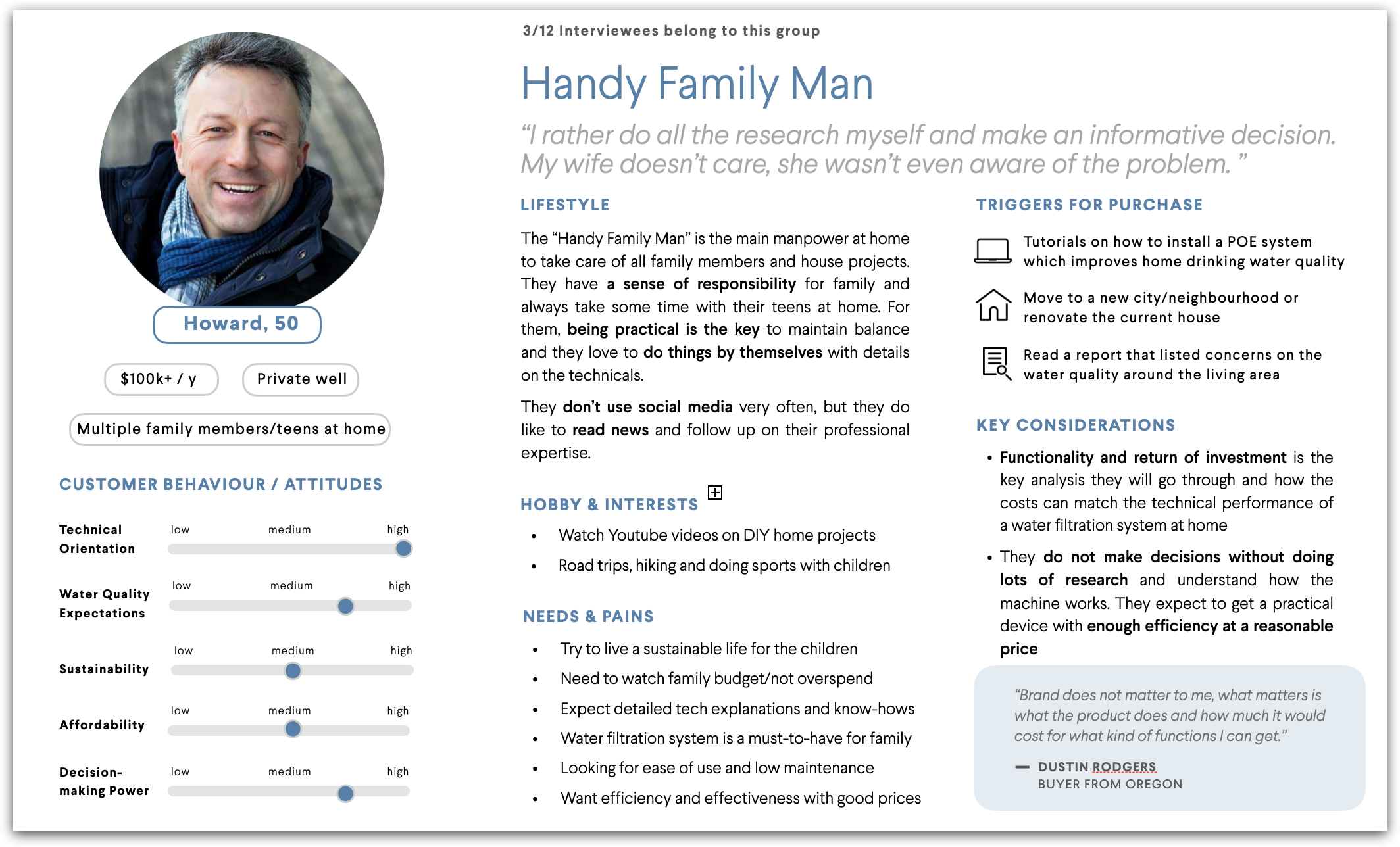
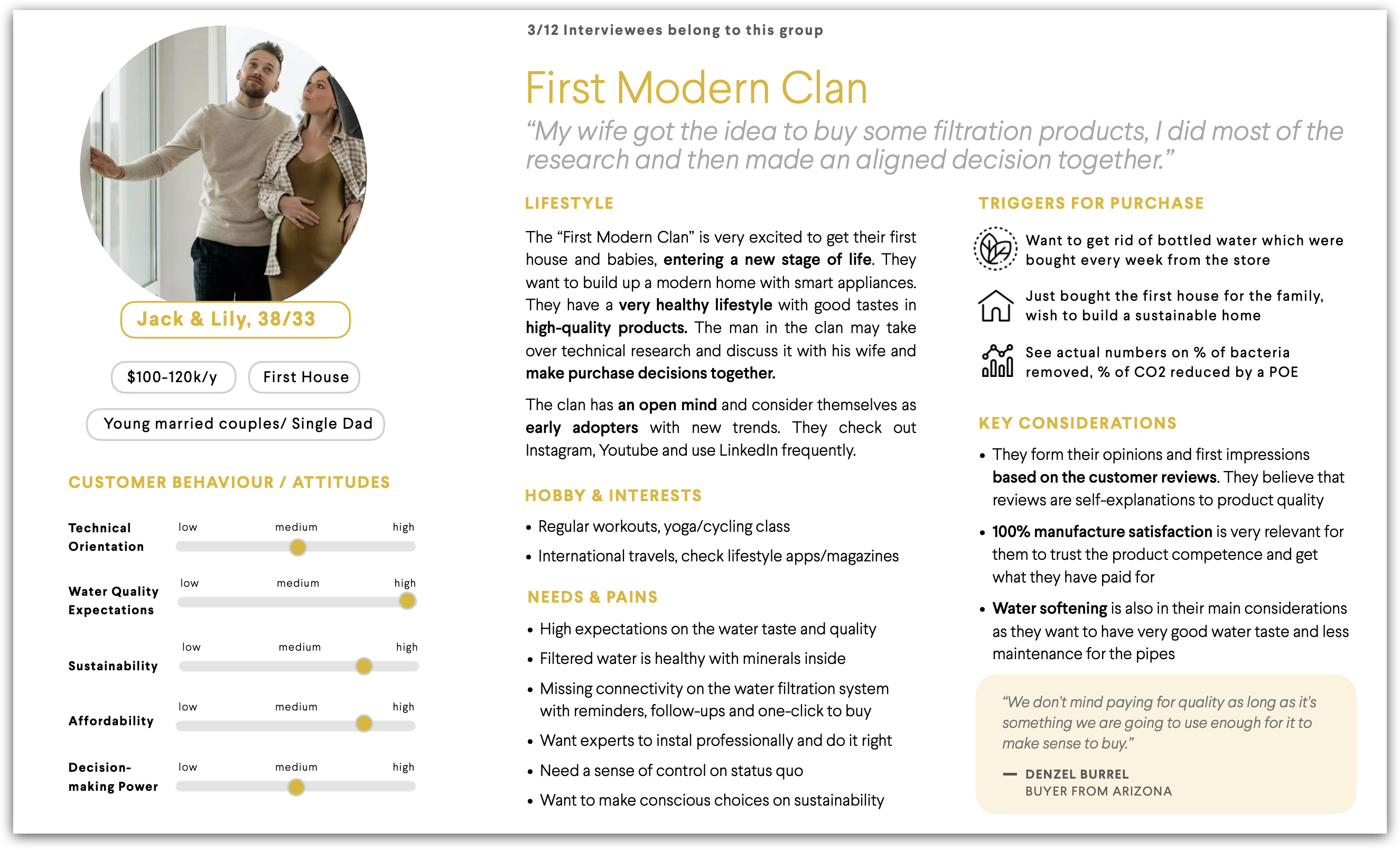
¶ Persona Matrix
A persona matrix is a tool that helps us to identify and keep track of personas. It segments personas by the intersection between two attributes. Attributes vary by industry and by the purpose of this matrix.
How to work with a persona matrix?
- Define the purpose of this matrix; we want to use it for product development, marketing, customer service, etc.
- Identify the axes X & Y (It can be awareness, demographics, frequency of purchase, difficulty to address, etc.)
- Place all your personas on the matrix
- Draft insights for strategy work
Here are some examples of persona matrices:
- For sales & marketing: difficulty to address & target group value (see the example picture)
- For channel adjustment: awareness of product & frequency of online purchase
- For product development: pain points & expectations
